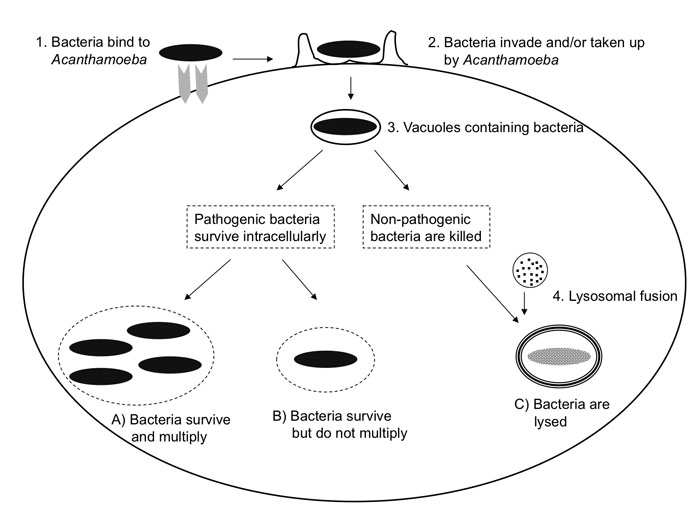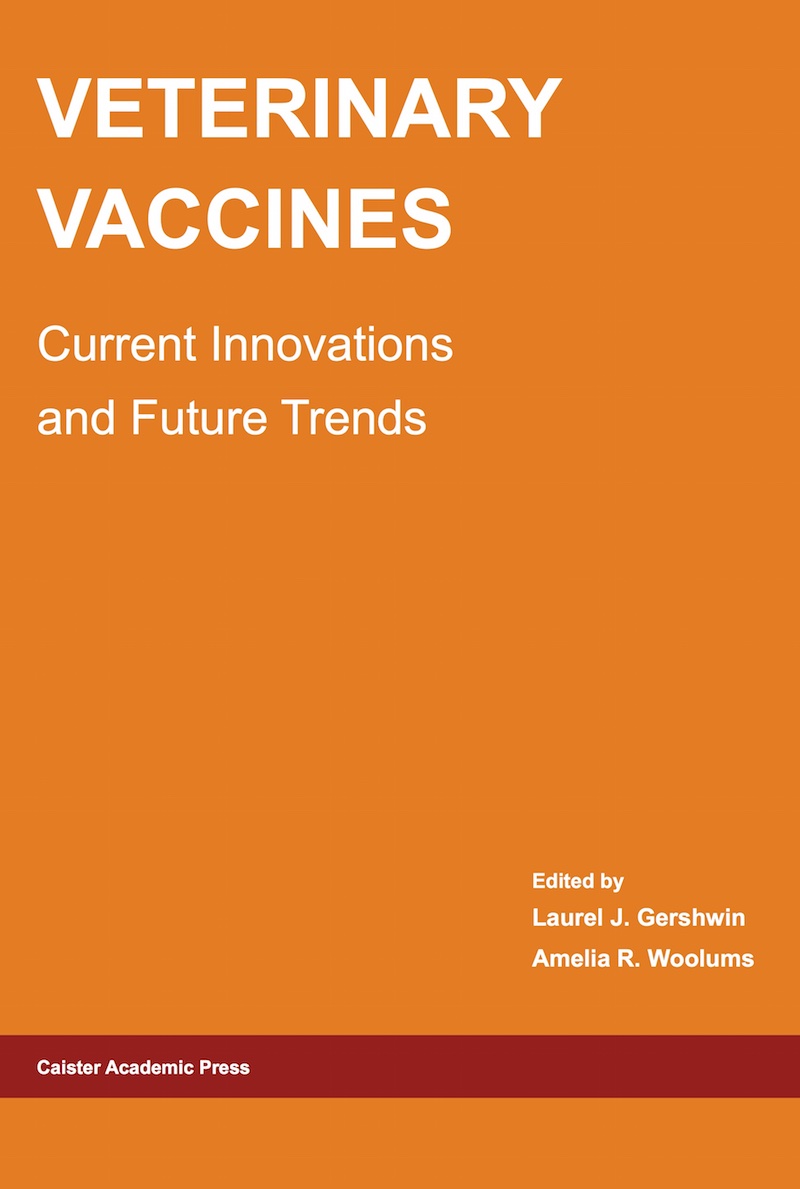Acanthamoeba: Biology and Pathogenesis
|
Author: Naveed Khan Published: 2009 ISBN: 978-1-904455-43-1 Everything that is known about Acanthamoeba is critically reviewed and divided into easy-to-follow sections. The current state of research on genomics, molecular and cellular biology, life cycles, geographical distribution, role in ecosystem, morphology, motility, phylogenetics, genotyping, metabolism, regulation of morphogenesis, host-parasite interactions, the molecular and immunological basis of pathogenesis, methods of transmission, epidemiology, clinical manifestation, diagnosis, treatment, new target development and drug resistance, and much more. read more ... |
Figure from: Acanthamoeba Biology and Pathogenesis
Full details of this book at Acanthamoeba. More figures at Acanthamoeba Figures.

Section G. Figure 5. Bacterial interactions with the clinical isolate of Acanthamoeba. Bacteria invade into and/or taken up by Acanthamoeba. Once intracellular, non-pathogenic bacteria are most likely killed and used as food source, while pathogenic bacteria possess the ability to evade intracellular killing mechanisms, and either survive or multiply within Acanthamoeba. A. Acanthamoeba act as host and/or reservoir for bacteria, B. Acanthamoeba act as Trojan horse for bacteria, and C. Acanthamoeba act as potent predator of bacteria.
Further reading at Acanthamoeba. More figures at Acanthamoeba Figures.



